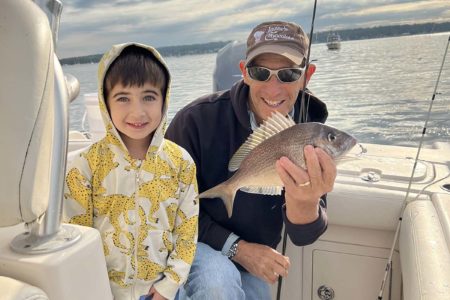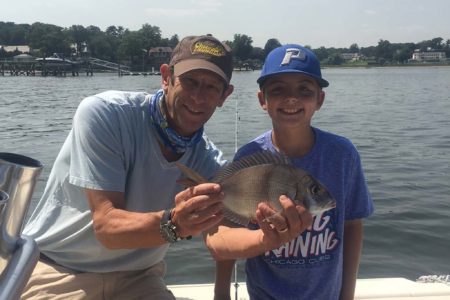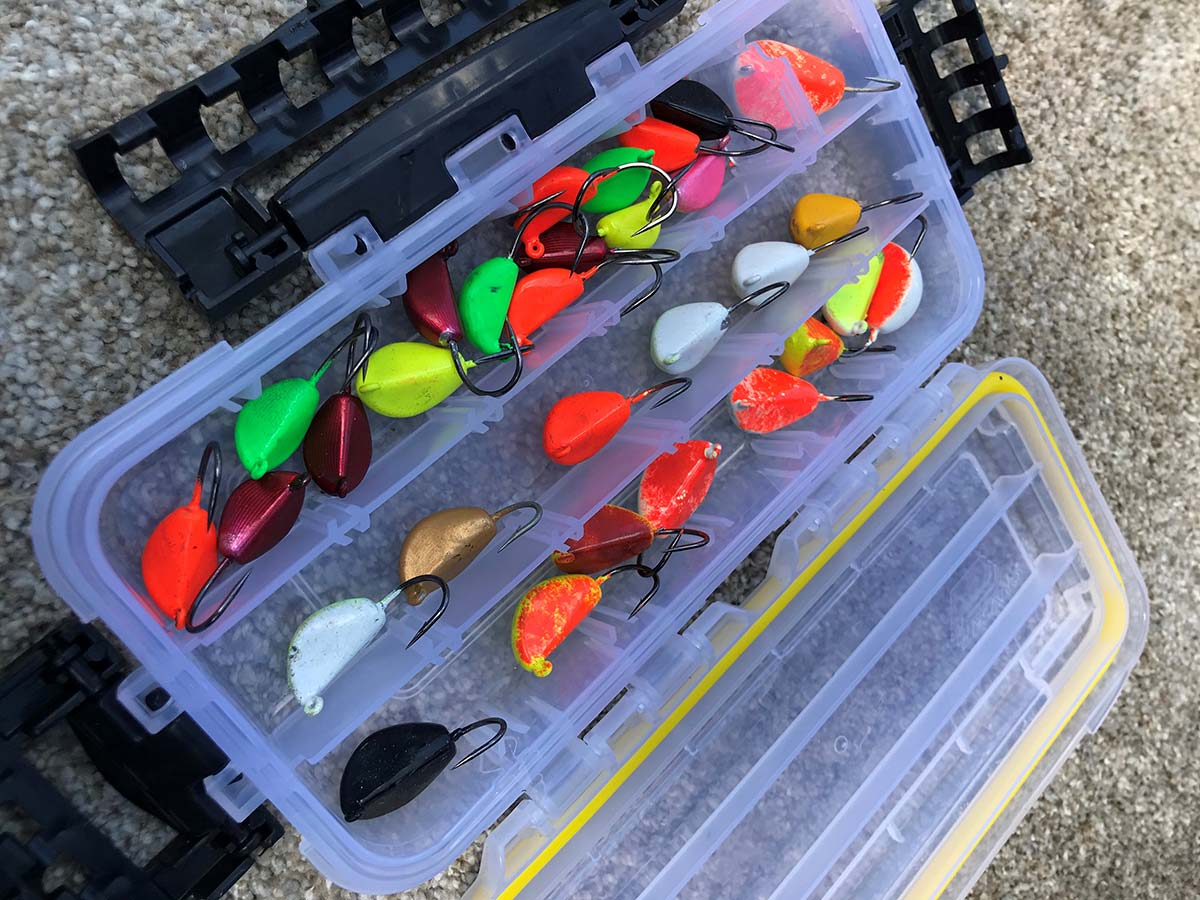
A leadhead jig tipped with clam, worm or squid is a sure fire and fun way to play the porgy game.
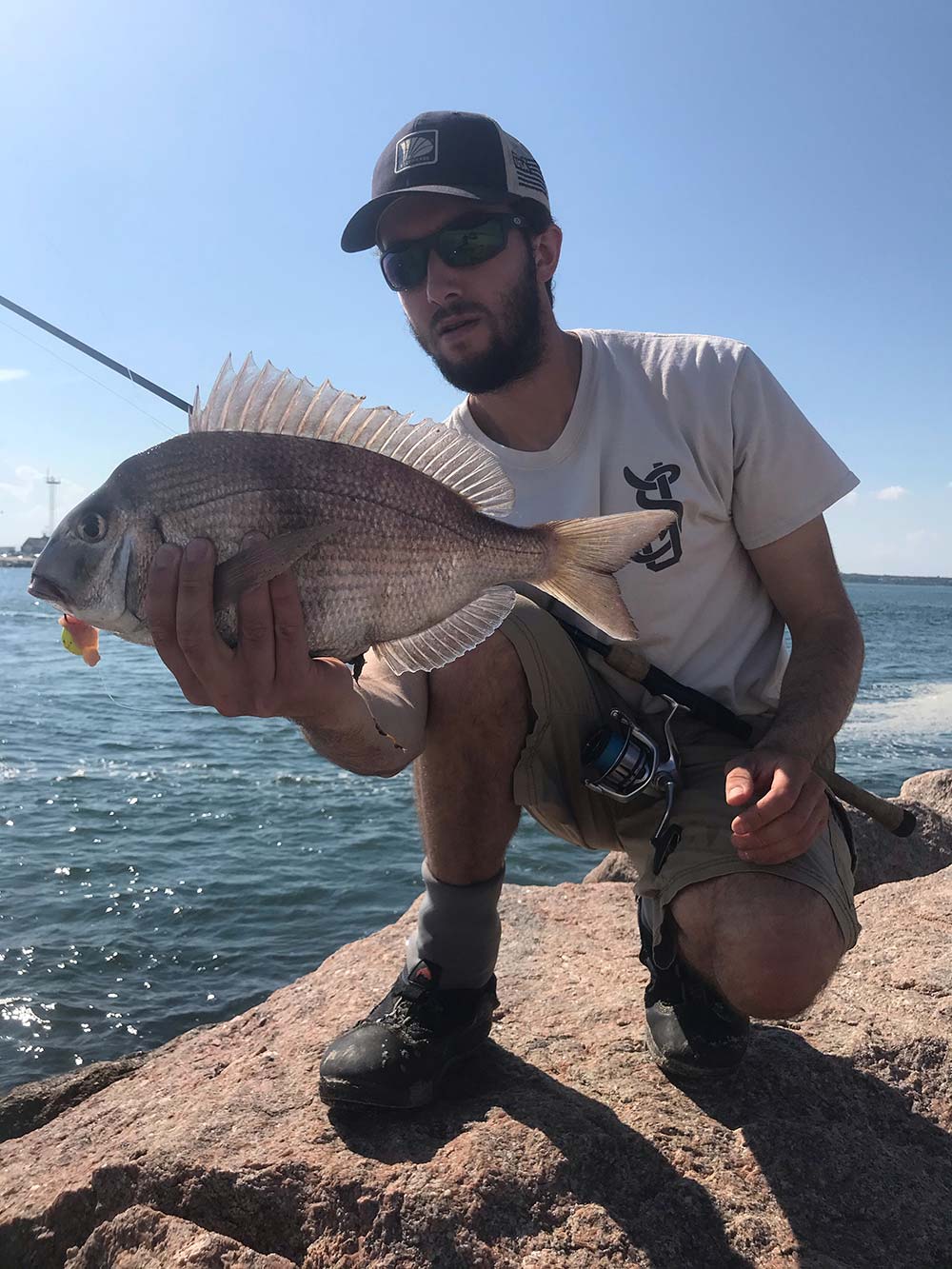
The past couple of seasons I joined the popular trend of using jigs for blackfish. I believe the simplicity, ease, idea of an alternate method and use of lighter tackle to target tog draws anglers to the method. I won’t look back either – if I can use jigs for them I will. It’s an effective technique that will even outfish standard bait rigs at times. Last year some of my biggest tog fish came on jigs.
Naturally my mind is always thinking of ways I can apply one type of fishing for a species to another type of species. Instantly I wondered if I could use the jig technique for species like scup and triggerfish. I figured light tackle jig fishing would definitely be a lot of fun with the way porgies and triggerfish strike and fight. It adds a twist to a fishery that traditionally relies on a high-low rig with baited hooks and a sinker, and simplifies fishing for these species.
The first problem I had to overcome was the fact that the hooks on blackfish jigs are significantly larger than what is required for porgies, making it tougher to hook these smaller mouthed fish. I sought help from a friend who pours blackfish jigs for me and we came up with a head that uses the same shape as a blackfish jig but accepts a smaller hook to compensate for the smaller mouths of porgies and triggerfish. The jigs were poured in sizes from a half-ounce up to 2 ounces. Ideally, I like to use the half-ounce jig close to slack tide. Less current and lighter jigs are always more productive in my mind.
Jigs vs. Rigs
One of these jigs tipped with a bait such as sandworm, clam or squid is very hard for a fish to resist as it falls towards the bottom. My number one bait is salted clam since I believe it stays on best. Many of the hits I do receive are on the way down to the bottom or as soon as it hits the bottom. As a result, I like to keep a semi tight line as it falls. We fished the jigs side by side with baited rigs and at times the jigs most definitely outfished the rigs. This was awesome to see and it reinforced our belief that using the jigs can be a deadly method for targeting these fish. We landed some real jumbo porgies on the jigs too, making for some crazy fun on the rocks. Sometimes they will pick up the jig and just start running with it, making for some very aggressive strikes. Once in a while I like to snap the jig out of the rocks and let it flutter down again, which sometimes results in a reaction strike.
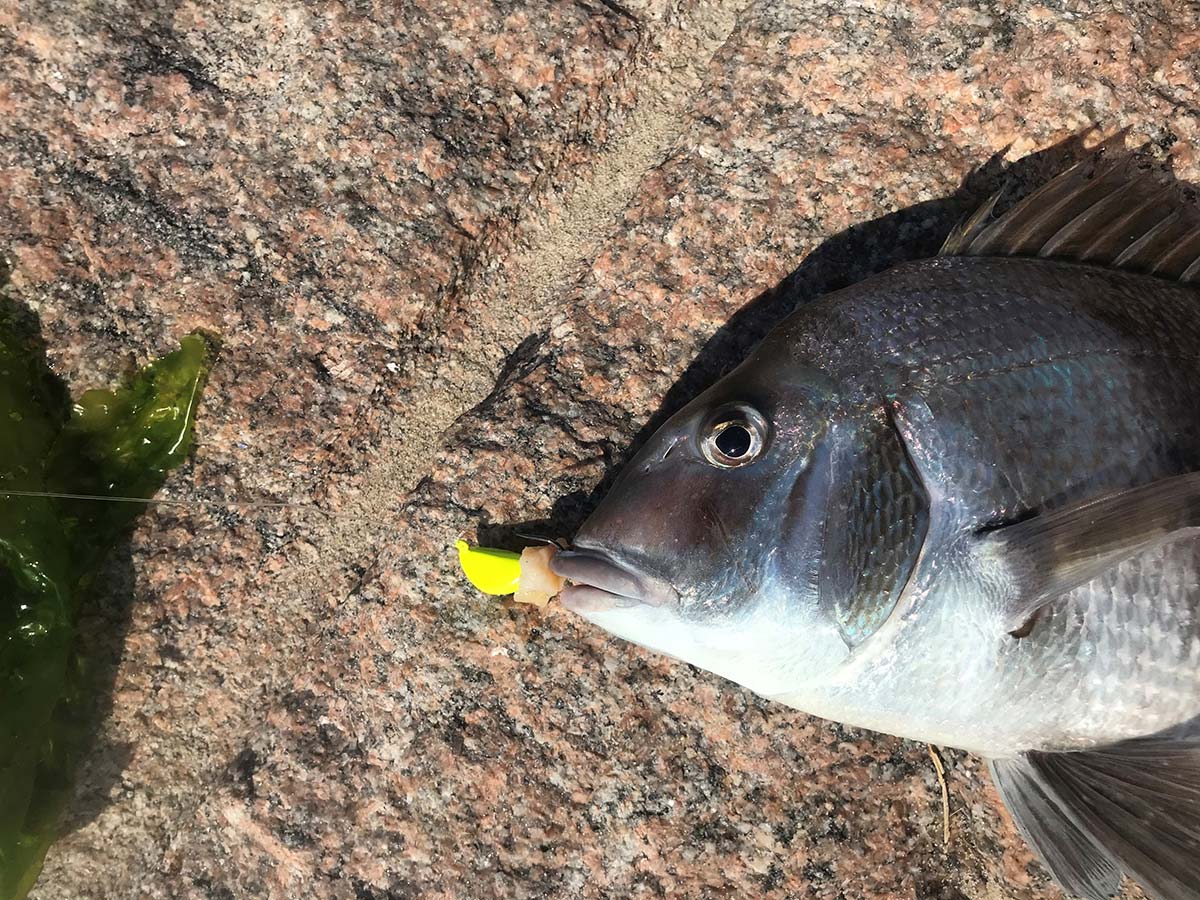
One of the main differences between blackfish jigging and feeding the jigs to porgies and triggerfish is that a blackfish usually plays with the jig first before committing to it. Anyone who has fished for blackfish knows not to set the hook on the first tap. What I noticed when going for scup and triggers is they usually hit it hard right away so don’t hesitate setting the hook. I haven’t lost many jigs either and would say that the bait rigs get hung up more frequently. Most of the time, you can pop the jig out quickly and prevent the loss. They are relatively cheap anyway and you should carry a good assortment to cover changing conditions.
As far as colors go, we had success with just about everything we painted. The colors included white, red, orange, chartreuse, yellow and black. I always tend to lean towards the red and orange since the head color on most porgy jigs is usually red and the color of clam is close to orange. That’s what I had luck with, although my buddy fishing next to me did well on the yellow and was even able to catch some fish on an unpainted jig. The reality is that color probably doesn’t really matter, although I’d suggest trying to stick to a “natural” looking color for best results anyway.
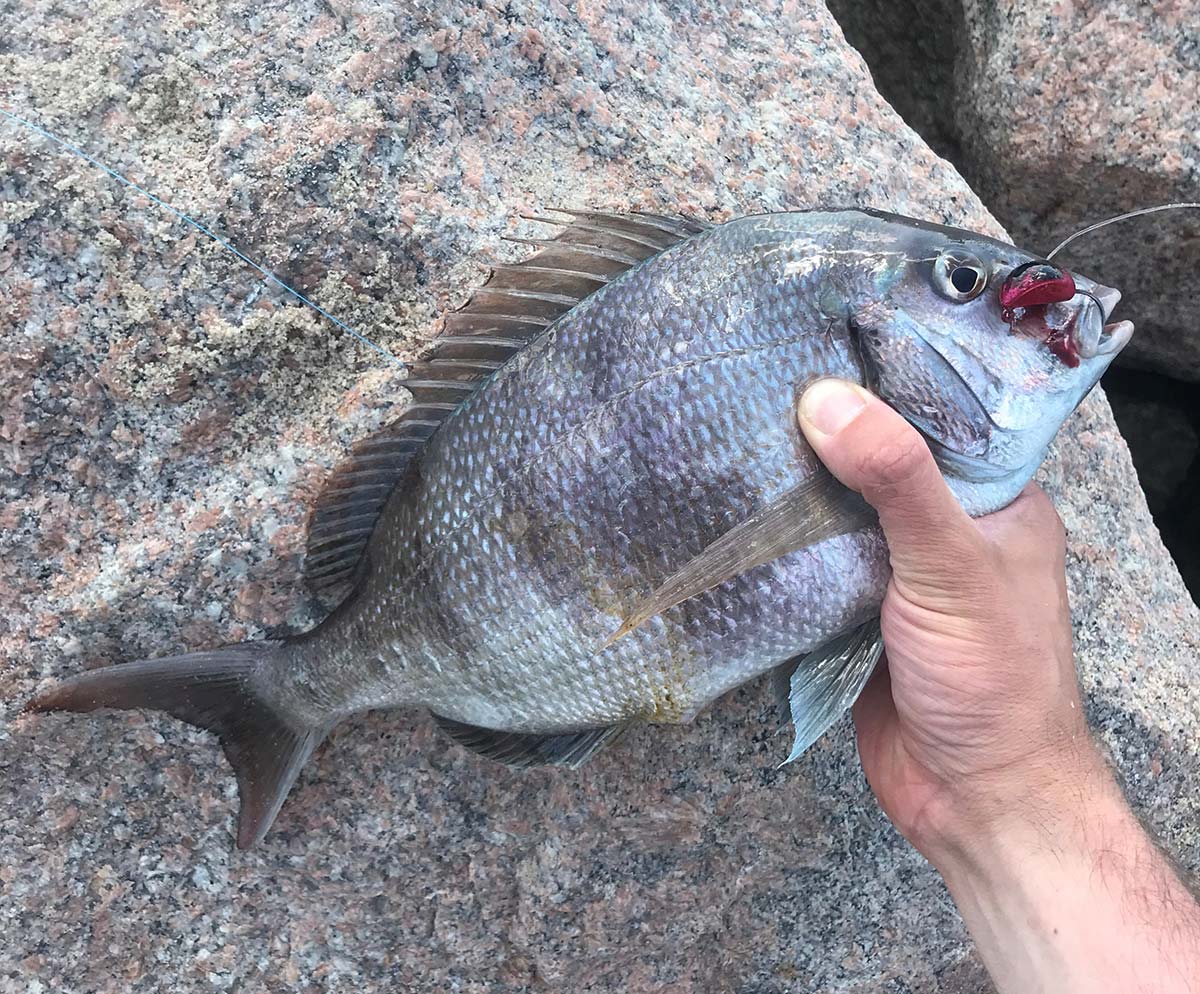
My tackle for fishing with these jigs is a medium action, 7-foot rod, 20-pound braided line and a 3-foot leader of 40-pound monofilament or fluorocarbon. Sometimes you can step it up to 50-pound test when fishing rockier areas. I tend to lean towards the fluoro because of the better abrasion when caught up in and around rocks. When rigging up everything is tied direct to keep it simple. My braid is attached to my leader with an Alberto knot while the jig is tied to the other end of the leader with an improved clinch knot.
By Boat Or Bulkhead
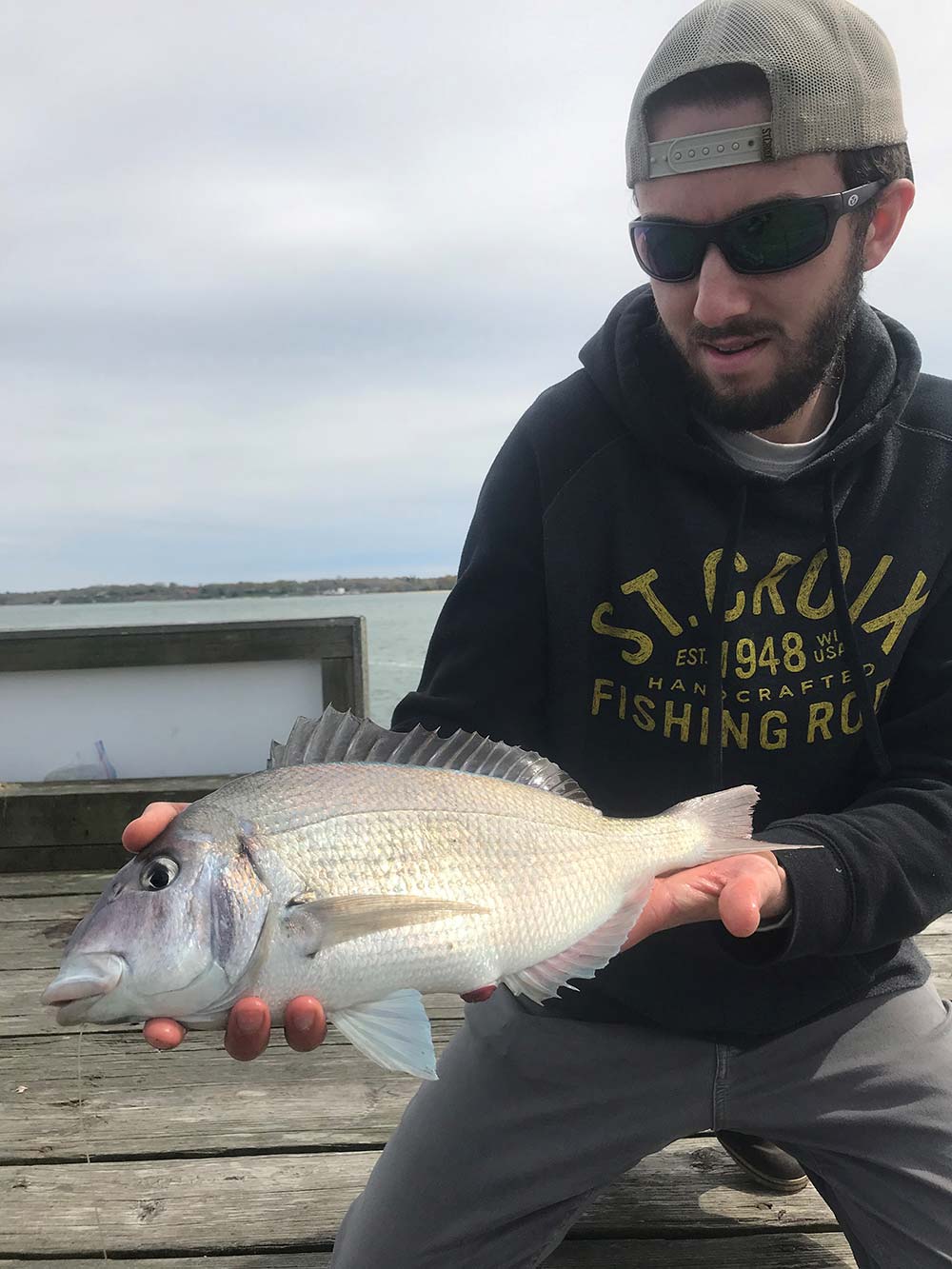
This method is not limited to just one type of area either. I’ve had luck with this approach off of jetties, docks, beaches and my kayak. Just fishing a single jig will result in getting hung up a lot less frequently, and using a jig just light enough to hold bottom will further reduce the chance of getting snagged. Also, the single hook reduces the chances of tangling while reeling in, and unhooking a fish is much simpler and quicker. Casting distance is rarely a concern since you want to place the jig as close to structure as possible. Sometimes this means casting just 10 feet or so. When fishing off docks I’ll drop it straight down among the pilings. On a kayak or boat, you can drift these jigs around structure. One place I haven’t tried them yet is ocean wrecks but I can only assume they will be deadly in this scenario also, although you may have to bump up the size of the jig. Don’t be surprised if you bring up some large sea bass on the wrecks while targeting porgies.
During my last outing out with the jigs I thought I hooked into a world record porgy .While bouncing the jig along the jetty’s rocks I got a sharp hit and set the hook. After a few short runs I brought up a nice 28-inch bass which was a pleasant surprise. The next cast I had a 25-incher nail the jig. It was interesting to see this because the rod with the baited rig was ignored by the porgies and bass, while the jig rod was getting hits from multiple species. I had to guess that the jig tumbled along the bottom looked more natural than a rig with two pieces of clam on it remaining stationary, proving that the jigs were even more effective than I had hoped they would be.
As noted, my source for jigs is a friend who pours them for me with a smaller hook inserted into a blackfish jig mold. The jigs are painted by us afterwards in our favorite colors. As far as an available source goes for those that are not familiar with pouring lead, you can reach out to a local shop and see if they have a connection for you. Tsunami has just come out with a blackfish jig that features a smaller hook than most tog jigs and will work on larger porgies and triggers. Also, don’t limit yourself to just blackfish jigs if you can’t find the right size hook, as some standard leadheads may work as well. The trick is having a heavy enough weight with a small enough hook.
M. Broderick
If you are looking to spice up your approach to the porgy game, give this technique a try. Even if you haven’t fished with blackfish jigs before, it is definitely worth giving it a shot. It’s fun, easy and effective. It also offers a different way to catch fish and a nice change of pace from the ho-hum of a sinker and bait. Porgies and triggerfish put up a great fight on the right gear, and once you zero in on the action, it can be a real blast with one fish after another as soon as the jig hits the bottom. You can even look at it as a warm up for jigging fall blackfish.
Just imagine if porgies grew to 20 or 30 pounds. If that was the case, it is probably the only fish I would ever fish for. And if you enjoy eating fish, scup and triggers both make for excellent eating and you can cook them multiple ways. I personally like these fish on the grill with some fresh seasoning, olive oil and onion. Simple and easy, yet very tasty.


